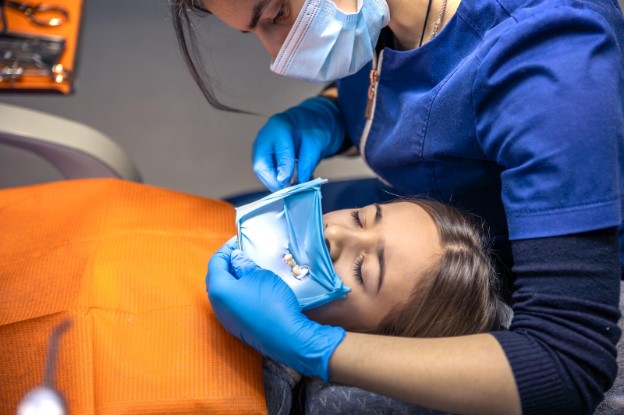If you’ve ever sat in a dentist’s chair and felt your palms sweating or your stomach tightening up, you’re definitely not alone. This kind of anxiety is common. A lot of people get extremely anxious about going to the dentist. That is why they prefer not to have any treatment.
Sedation dentistry plays a major role in taking away anxiety. In this article, we will discuss what exactly sedation dentistry is and what kinds of sedation are actually used.
What is sedation dentistry?
Sedation dentistry plays a major role in relaxing the patient during the dental procedure. You’re not always asleep. Sometimes you’re just calm, like you don’t care much about what’s happening around you. The primary goal is to alleviate fear, manage pain, and minimize the overall stress of the experience.
Types of sedation in dentistry
There are a few main types of sedation that are commonly used in a dental office.
1. Minimal sedation
Nitrous oxide, referred to as laughing gas, is widely used for minimal sedation in dental offices. Within minutes, you feel more relaxed, a bit floaty, but you’re still awake. You can respond to the dentist if they ask you a question.
The best part about nitrous oxide is that it can wear off quickly. Once they stop giving you the gas, the effects usually subside pretty quickly. Most people can even drive themselves home afterward.
2. Oral sedation
Oral sedation is taking a pill before the procedure. The pill is a form of benzodiazepine, like valium or Halcion. It can vary from minimal to moderate. After this type of sedation, you may feel drowsy or get sleepy enough that you actually doze off during the procedure.
You are still not completely out, as you can usually be awakened with a nudge or a voice. This is best for invasive procedures like extractions and deep cleaning.
3. Intravenous (IV) sedation
Intravenous IV sedation is directly injected into your veins. This allows the dentists to control the level of sedation precisely. In this state, you are not totally unconscious, but you’re deeply relaxed and usually unaware of what’s happening.
This type of sedation is often chosen for longer or more complicated dental work, or for patients with really high anxiety. As it is stronger, you definitely need someone to accompany you and help you get home safely.
4. General anesthesia
General anesthesia is used for the deepest level. It is rarely used for routine dental work. Anesthesia is usually reserved for very complex procedures, like jaw surgery and full mouth reconstruction. As there are high risks, it is done by a professional anesthesiologist or oral surgeon.
Conclusion
Sedation dentistry is widely used to relieve pain during any dental procedure. The fear of the dentist is worse than the actual procedure, and sedation helps bridge that gap. The sedation ensure your comfort during the procedure. Whether it is nitrous oxide or IV, sedation dentistry can ease your dental experience.

